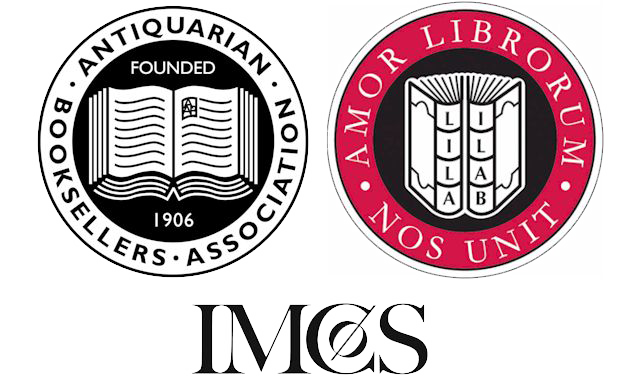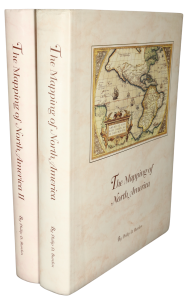Rare Maps and Prints
- World & Celestial
- North America
- West Indies, South & Central America
- British Isles
- British Isles
- English counties
- Large-scale
- Bedfordshire
- Berkshire
- Buckinghamshire
- Cambridgeshire
- Cheshire
- Cornwall
- Cumberland
- Derbyshire
- Devon
- Dorset
- Durham
- Essex
- Gloucestershire
- Hampshire
- Herefordshire
- Hertfordshire
- Huntingdonshire
- Islands
- Kent
- Lancashire
- Leicestershire
- Lincolnshire
- Middlesex
- Norfolk
- Northamptonshire
- Northumberland
- Nottinghamshire
- Oxfordshire
- Rutland
- Shropshire
- Somerset
- Staffordshire
- Suffolk
- Surrey
- Sussex
- Warwickshire
- Westmoreland
- Wiltshire
- Worcestershire
- Yorkshire
- Wales
- Scotland
- Ireland
- Western Europe
- Eastern Europe
- Middle East
- Africa
- Asia
- Australasia & Pacific
- Decorative Prints
- Title Pages
Mr. Philip D. Burden
P.O. Box 863,
Chalfont St. Giles, Bucks HP6 9HD,
UNITED KINGDOM
Tel: +44 (0) 1494 76 33 13
Email: enquiries@caburden.com
This is the first edition of the FIRST FULLY USABLE ATLAS FOR THE BLIND printed in the United States of America. Samuel Gridley Howe (1801-76) was the founder and president of the New England Institute for the Education of the Blind. This would become known as the Perkins Institute for the Blind. He was also the husband of Julia Ward Howe (1819-1910) the noted American abolitionist and poet. The DAB describes him as a “champion of peoples and persons labouring under disability … he showed the world that the young blind both could and should be economically and socially competent”. Howe was at the forefront of his profession and even installed a printing press to publish works for the blind. He designed a modified roman alphabet known as the ‘Howe type’. Howe described in his own words that “after hesitating a long time whether to use a new phonetic alphabet, or a series of stenographic characters, or the common alphabet, I adopted the latter; not, however, without adhering to the opinion that one of the others must eventually be used in printed for the blind. Having decided to use the common alphabet, slightly varied, I endeavoured to reduce the bulk of each letter to the minimum size which the blind could feel”. He did however eventually recognize the need for a printing system such as Braille.
Following his initial productions Howe began to notice that his students could recognise visual elements as well as text. “They soon understood that sheets of stiff pasteboard, marked by certain crooked lines, represented the boundaries of countries; rough raised dots represented mountains; pins heads sticking out here and there, showed the location of towns; or, on a smaller scale, the boundaries of their own town, the location of the meeting-house, of their own and of the neighbouring houses, and the like; and they were delighted and eager to go on with tireless curiosity. And they did go on until they matured in years, and became themselves teachers, first in our school, afterwards in a private school opened by themselves in their own town”.
The first successful printing of relief for the blind occurred in Paris in 1784. Osier believed that there were less than fifty titles printed in English before 1850. Most were of very limited production. There exists a map believed to be of Boston which was issued earlier than this work, possibly as a trial. Another earlier work exists but it required the presence of a sighted person. This was the first that could be used unaided. The maps were prepared and printed by Samuel P. Ruggles. The Annual Report of the Trustees of Perkins in 1835 states “The director has been engaged in a series of experiments upon making maps for the blind, which has resulted in the contrivance of means of embossing, which will be much better than those used in any of the European institutions, and which can be multiplied at a very cheap rate. A set of maps will soon be finished, forming an atlas for the blind superior to anything of the kind yet made public.”
The atlas contained 24 raised maps of the States each followed by descriptive text. Each state is shown in outline and is named along with those neighbouring. The principal rivers and the cities are indicated by dots and initial letters. He even went to the detail of including degrees of longitude and latitude, bodies of water and mountains. The accompanying text describes the state and its population, climate, commerce etc. Any cartographic work by Howe is extremely rare. Only fifty copies were made and of these the locations of only four are known today; The University of Minnesota, Library of Congress, the State Library of Pennsylvania and the British Museum. The atlas is rarely complete.
Provenance: Samuel Murray, Massachusetts, 1979. Not in Howes; Mapline Number 6 June 1977 ‘Early Map for the Blind’; Osier, Donald V., University of Minnesota (private correspondence from the late 1970s; Perkins Books for the Blind. Section I. 1907; Phillips (1909-) 10471; ‘Letters and Journals of Samuel Gridley Howe’, ed. L. E. Richards, Boston, 1909; Not in Sabin.
Following his initial productions Howe began to notice that his students could recognise visual elements as well as text. “They soon understood that sheets of stiff pasteboard, marked by certain crooked lines, represented the boundaries of countries; rough raised dots represented mountains; pins heads sticking out here and there, showed the location of towns; or, on a smaller scale, the boundaries of their own town, the location of the meeting-house, of their own and of the neighbouring houses, and the like; and they were delighted and eager to go on with tireless curiosity. And they did go on until they matured in years, and became themselves teachers, first in our school, afterwards in a private school opened by themselves in their own town”.
The first successful printing of relief for the blind occurred in Paris in 1784. Osier believed that there were less than fifty titles printed in English before 1850. Most were of very limited production. There exists a map believed to be of Boston which was issued earlier than this work, possibly as a trial. Another earlier work exists but it required the presence of a sighted person. This was the first that could be used unaided. The maps were prepared and printed by Samuel P. Ruggles. The Annual Report of the Trustees of Perkins in 1835 states “The director has been engaged in a series of experiments upon making maps for the blind, which has resulted in the contrivance of means of embossing, which will be much better than those used in any of the European institutions, and which can be multiplied at a very cheap rate. A set of maps will soon be finished, forming an atlas for the blind superior to anything of the kind yet made public.”
The atlas contained 24 raised maps of the States each followed by descriptive text. Each state is shown in outline and is named along with those neighbouring. The principal rivers and the cities are indicated by dots and initial letters. He even went to the detail of including degrees of longitude and latitude, bodies of water and mountains. The accompanying text describes the state and its population, climate, commerce etc. Any cartographic work by Howe is extremely rare. Only fifty copies were made and of these the locations of only four are known today; The University of Minnesota, Library of Congress, the State Library of Pennsylvania and the British Museum. The atlas is rarely complete.
Provenance: Samuel Murray, Massachusetts, 1979. Not in Howes; Mapline Number 6 June 1977 ‘Early Map for the Blind’; Osier, Donald V., University of Minnesota (private correspondence from the late 1970s; Perkins Books for the Blind. Section I. 1907; Phillips (1909-) 10471; ‘Letters and Journals of Samuel Gridley Howe’, ed. L. E. Richards, Boston, 1909; Not in Sabin.
HOWE, Samuel Gridley
Atlas of the United States Printed for the use of the blind. At the expense of John c. Cray; under the direction of s. c. howe. at the n. e. institution for the education of the blind
|John C. Cray, Boston, 1837
With 49 (of 51) single sheets comprising 23 (of 24) relief and raised-letter maps on heavy wove paper, together with accompanying text leaves with raised letters. Lacks the map of Indiana and the text leaf for Ohio, tear to the text of Alabama.
Stock number: 7104
SOLD








